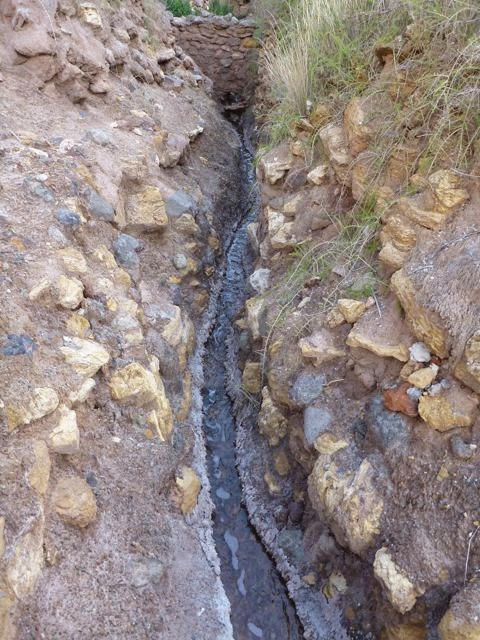North of Cusco we find the delightful village of Ollantaytambo where we are never more than a ten minute walk from cafe' con leche or our choice of awe-inspiring Inca or pre-Inca ruins. The ruins require one to hitch up his britches and exert a little effort to climb but they are worthwhile.
This Inca structure is on the left side of the river and is not controlled or patrolled.
The site above is known as temple of the sun. This and the associated ruins are on the right side of the river, require an admission fee and are carefully patrolled and regulated.
Terraces near the temple of the sun.
The best part is that the village of Ollantaytambo itself is a fascinating place occupying the same buildings occupied by the Incas in the fifteenth century. The streets too narrow for an oxcart, uniquely fitted stonework of the walls and cobblestone pavement attest to it's origins.
Typical street in Ollantaytambo
This is actually a staircase in an area
away from where most tourists circulate.
Up the down staircase
From our base in Ollantaytambo, a cold-water hostal, we patch together buses and cabs to take us to the neighboring town of Urubamba and a unique mountain site where a spring of salt water flows out of the mountain and over a large matrix of salt pans constructed centuries ago on a terraced hillside.
 |
| This stream is only a couple inches wide. If you look closely you see salt crystals on the the edges. |
The stream feeds a large complex of drying ponds.
As an aside, the majority of tourists we meet in sites other than Machupiccu are native Spanish speakers and I believe they are mainly Peruvians. The largest minority of foreign tourists appear to be French. A local guide we meet at breakfast points out that there are an awful lot of folks from USA at Machupiccu.
One of the English-speaking tourists charms a local child.
We understand the locals speak the Quechua language.
These costumes are common on the streets of Ollantaytambo. This hat indicates a different "tribe" from the lady above but we have not learned names of histories of the groups.
A lot of my interest in the ruins is related to architecture. In this area they use straw thatch for the roofs.
The life expectancy of a straw roof is about one year.
The thatch is supported by wooden "beams" which are in turn held down by leather thongs secured to stone "anchors" in the masonry gables.
This following photo is representative of the area around Ollantaytambo.
This glacier appears high above Urubamba and is readily visible from the village of Moray where we stop for lunch. We took a delightful stroll through corn fields to get to Moray.
In November, the campesinos are preparing the soil and planting the seeds.
Quite a character to find behind a team of oxen


























